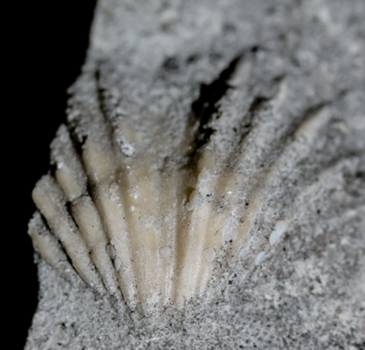Quarry trail guide
Geology
The Quarry Trail (Q1, Q2) takes visitors through the bottom of the abandoned quarry. The rock walls surrounding the quarry bottom are composed of limestone. Limestone consists mainly of calcium carbonate. The limestone rock in the DePauw Nature Park was formed 350 million years ago when the area was covered with a shallow sea. The sea water contained large quantities of calcium carbonate. The calcium carbonate precipitated out of the water and eventually solidified into limestone.
Numerous marine organisms used the dissolved calcium carbonate in the seawater to form internal skeletons and shells. Many of the rock layers contain fossils of these organisms. Fossils formed when an animal's shell or other hard structure is buried without being broken into smaller pieces. Over time, the shell is replaced with limestone forming a replica or print of the shell.
During some periods of limestone formation, there was strong tidal activity. Small pieces of carbonate rolled back and forth on the sea floor. This rolling action caused the carbonate to form spherical grains that look like small white marbles. The spherical carbonate grains are referred to as oolites. Three-quarters of the way up the rock walls, you can see a thick whitish-yellow layer; this is the layer of oolitic limestone. You can also see curved lines in this layer of oolitic limestone. The curved lines are indicative of the tidal action and formation of sand dunes.
Groundwater has moved through the limestone for millions of years. The movement of groundwater through the limestone has caused formation of chert nodules. The chert is composed of silicon dioxide and is gray or whitish-gray. It forms small round or ellipitical patches within the limestone. American Indians used chert for tools and weapons.
Fossils
Bryozoans are small marine animals that live in colonies. A colony is composed of anywhere from a few to millions of individuals. Each individual animal secretes an external skeleton made of calcium carbonate, which forms the structure of the colony. Horn-shaped bryozoans have a branching structure that looks like coral or antlers. Fan-shaped bryozoans have a delicate fan-like or mesh-like structure.
Crinoids are marine animals that look like flowers. It has a long stem or stalk and a series of petal-like tentacles. The stalk keeps the animal attached to the sea floor and the petal-like tentacles extend out and filter food particles from the water. Multiple cross-sections of crinoid stems, also known as "Indian beads," are visible in rocks in the quarry bottom of the Nature Park.
Brachiopods are marine animals that look like clams. Each brachiopod has two hard outer shells covered with ridges. Brachiopods are still living in today’s oceans, but there are much fewer species now than there were during ancient geological time periods.
Photos by Claire Ladd '17
Horn-shaped bryozoan
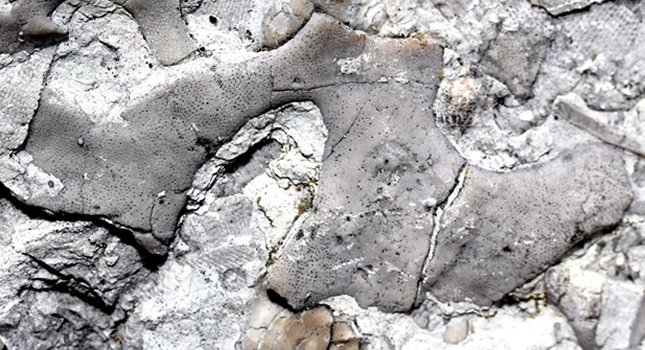
Fan-shaped bryozoan
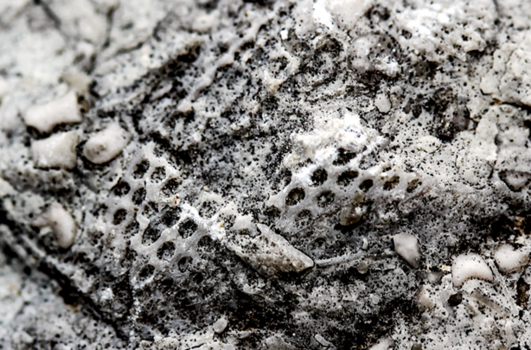
Crinoid stems
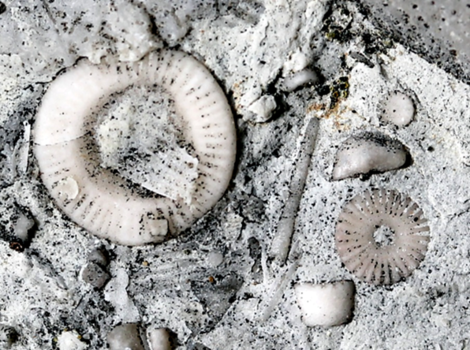
Crinoid stem
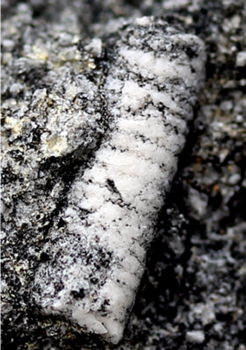
Brachiopod
